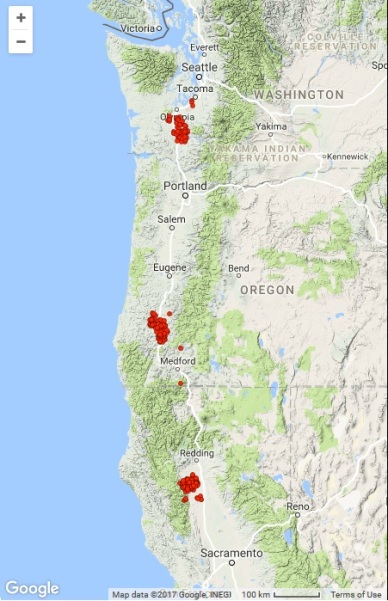"Slow Slip" May Precede the "Big One"

Multiple swarms of Tectonic Tremors produced by a "Slow Slip" may precede a major catastrophic earthquake along the entire west coast.
Multiple swarms of Tectonic Tremors Produced by a "Slow Slip" May Precede a Major Catastrophic Earthquake Along the Entire West Coast of the US.
A professional research team at UC Riverside made a
breakthrough discovery recently, using a new technique in seismic detection that
studies swarms of microquakes, or tectonic tremors. along the fault lines. This
is especially true in the Anza Gap region of the San Jacinto Fault, near
Riverside CA. Tectonic tremors are believed to increase the likelihood of a
moderate to very large, cataclismic earthquake to occur close to the earth’s
surface by altering the stress along the fault.
“While other regions of the
San Jacinto fault give rise to small and moderate earthquakes on a regular
basis, the Anza Gap is surprisingly quiet, which raises questions about how it
is releasing the stress it accumulates. For that reason, many experts suspect
that this area is ripe to produce a damaging earthquake. These tremors are being
caused by "slow slip" movement deep in the fault, and when the deep part of the
fault slips it adds stress to the shallow part.
The San Jacinto fault may
not be shaking yet, but it's trembling. And if it goes, according to one study,
it could rupture along with the San Andreas fault--producing a catastrophic
earthquake.
The San Jacinto fault should not be underestimated when it comes
to its potential to cause damaging earthquakes.
Recent discovery along
San Jacinto fault shows that these tectonic tremors are similar to those that
occured prior to other powerful earthquakes.
Slow slip is what preceded the
massive 9.0 magnitude earthquake in Japan in 2011. It is also believed that a
slow slip may have preceded other large megaquakes around the world, such as the
recent 8.2 in Mexico and the 8.0 in Alaska. Additionally, a 2016 study by CSU
Northridge professor Julian Lozos found that the 7.5 earthquake of 1812 began on
the San Jacinto fault and then "propagated" to the San Andreas fault.
The
location in Southern California is now in an earthquake swarm, which means
larger movement could be coming in the near term.
Articles of Reference:
Anza Gap In Riverside County Is 'Ripe To Produce A Damaging Earthquake'
Newsweek: San Andreas Fault: Tectonic tremor detected deep beneath earth’s
surface raises risk of massive earthquake
Could the San Jacinto Fault Zone Rupture Sooner Than Expected?
Earthquake Risk Elevated
with Detection of Spontaneous Tectonic Tremor in Anza Gap
On San Andreas fault, scientists see potential 'damaging earthquake' lurking in
Anza Gap
What
are slow slips?
Scientists Predict 9.2 EARTHQUAKE TSUNAMI Fox News WARNS LEAVE
For further reference and a weekly forecast, along with
daily updates, check the following link often:
https://www.youtube.com/channel/UCHE92x768p8h-fMrqhsnE1Q